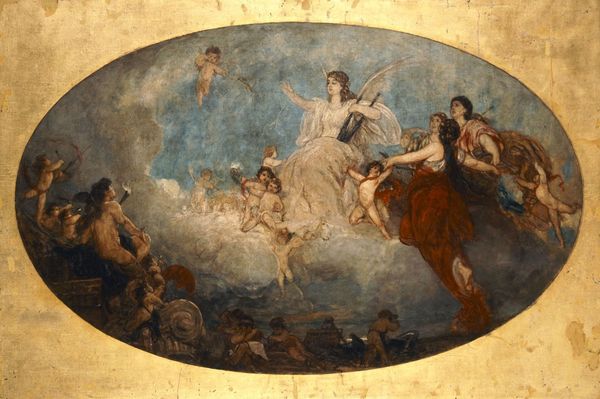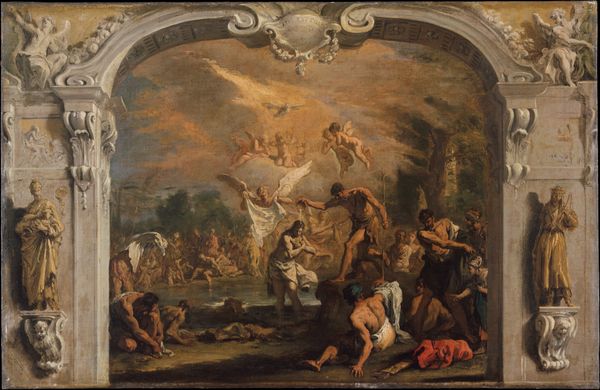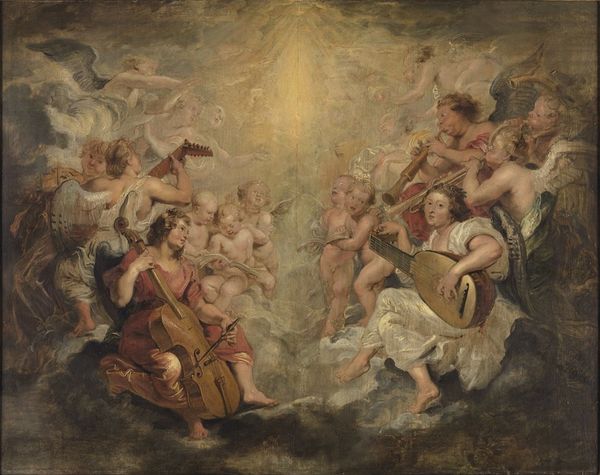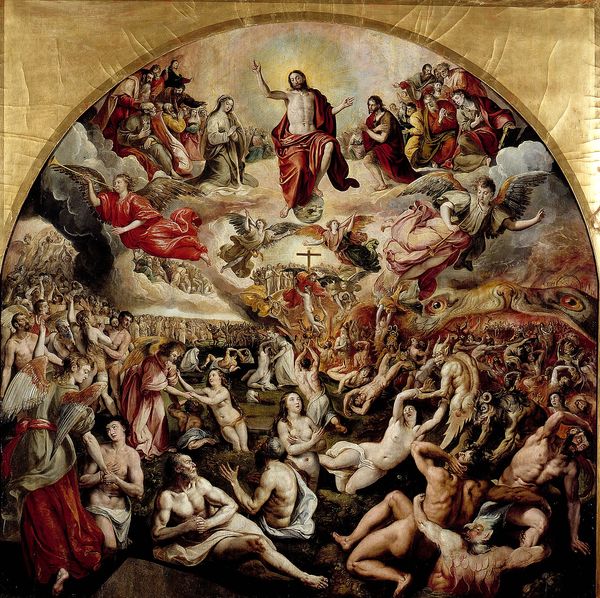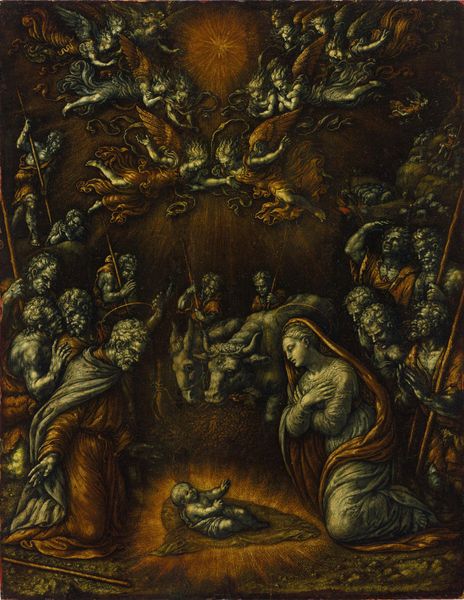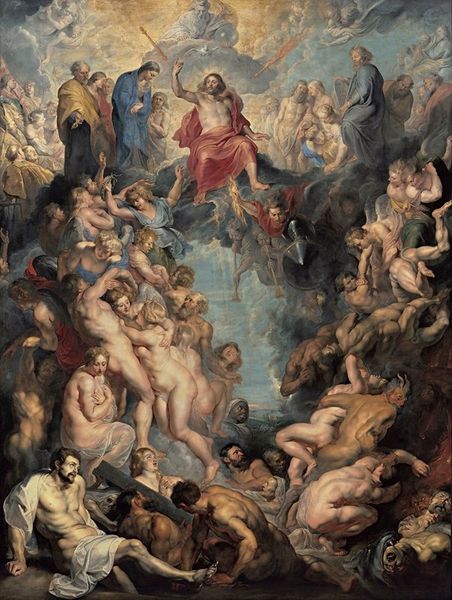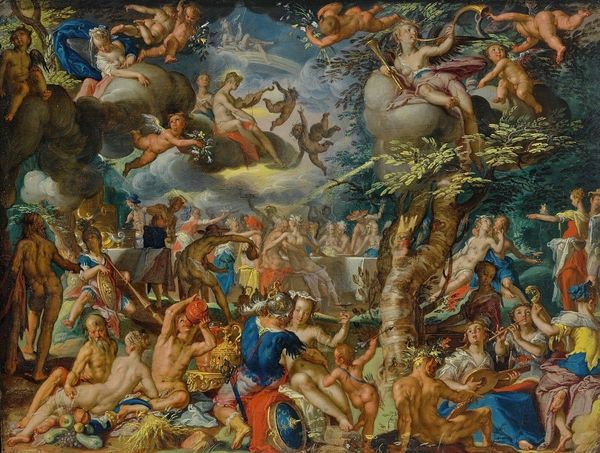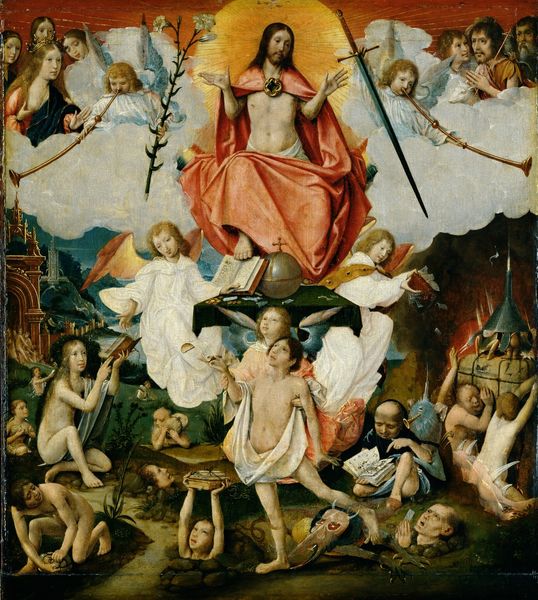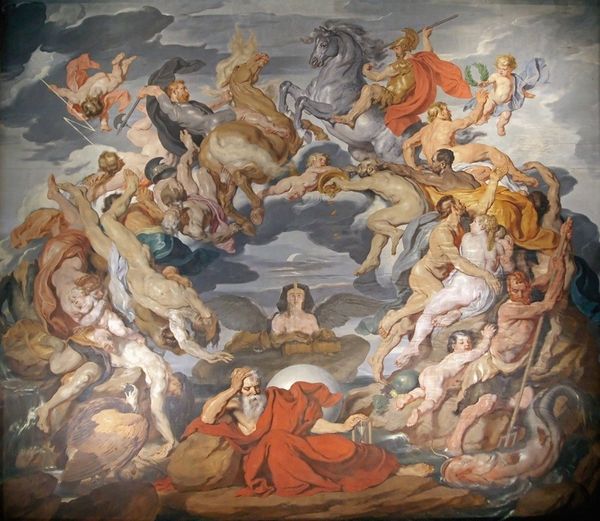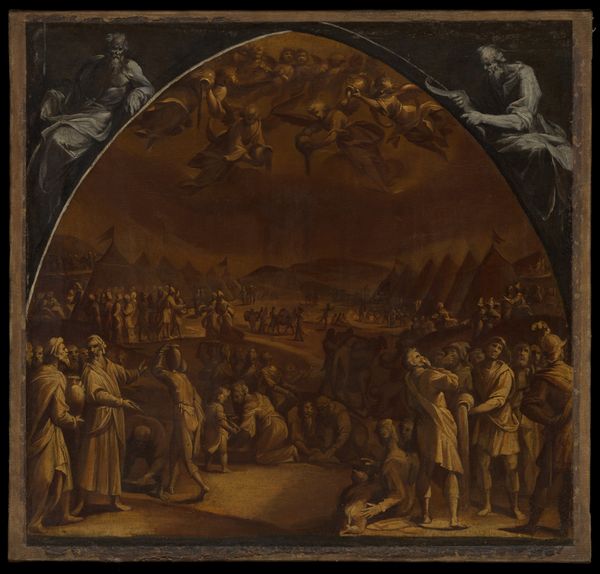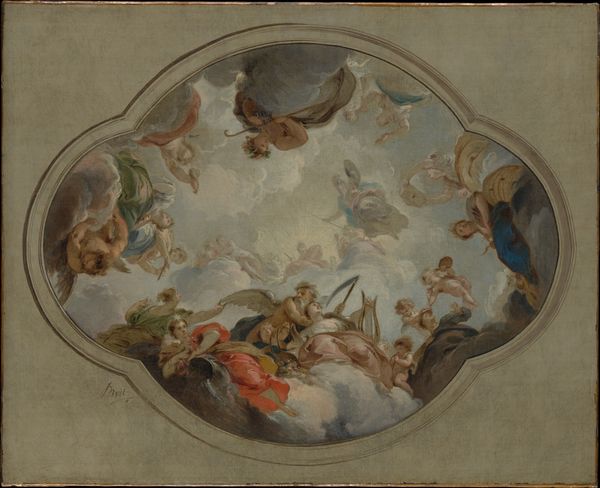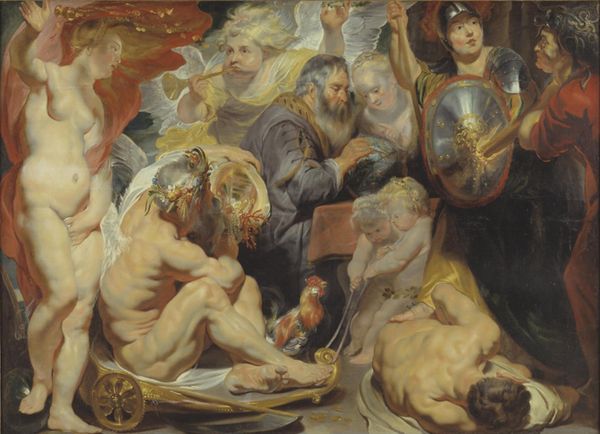
painting, oil-paint
#
allegory
#
baroque
#
painting
#
oil-paint
#
figuration
#
oil painting
#
history-painting
#
nude
Dimensions: height 200 cm, width 200 cm, depth 9.3 cm
Copyright: Rijks Museum: Open Domain
Curator: Aert Pietersz. painted "Last Judgment" in 1611 using oil paints. The piece presents a complex composition depicting figures rising to heaven or descending into hell. Editor: My immediate response is…dynamic. It feels crowded and the use of a circular format heightens the sensation of swirling chaos. The stark division between light and shadow really accentuates the drama. Curator: The Baroque style is certainly evident. Observe how Pietersz. employs dramatic contrasts and dynamic movement to guide the viewer's eye across the canvas, starting from the ascending Christ at the top, cascading down towards the turmoil below. The composition functions as a sophisticated visual argument. Editor: Symbolically, the radiant Christ at the apex mirrors the angels with trumpets who guide the deserving to heaven. In contrast, we see that the damned are being dragged down into darkness. Even the color palette reinforces this, with celestial golds and reds contrasting against murky browns and blacks. I believe this stark duality served to powerfully instill morality in viewers of the time. Curator: Precisely. The strategic placement of figures and the careful manipulation of light articulate a precise visual hierarchy. Pietersz. directs us to discern moral order inherent within apparent disarray. Semiotically, each gesture and placement constructs meaning, contributing to an overarching narrative. Editor: Beyond religious doctrine, this piece also speaks volumes about the human condition. The fear of judgement, the yearning for redemption...those feelings transcend any specific belief system. This piece visually encodes collective anxieties about the afterlife. Curator: It’s undeniable how this oil painting presents both historical and stylistic data for our analysis, providing material evidence about the conditions of artistic production and aesthetic values of that specific time period. It masterfully conveys the formal strategies employed by artists engaging with potent ideological subjects. Editor: I've gained a deeper appreciation of how the symbolic language and dramatic techniques capture deep human fears, reminding us how cultural ideas about morality can shape artistry and visual culture. Curator: A careful examination of Pietersz.'s painting methods reveals its complex structural organisation.
Comments
No comments
Be the first to comment and join the conversation on the ultimate creative platform.
